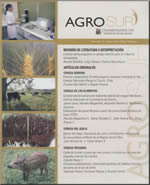TIPIFICACIÓN Y CARACTERIZACIÓN DE SISTEMAS PREDIALES: CASO DE ESTUDIO EN ANCUD, ISLA DE CHILOÉ
Contenido principal del artículo
Resumen
Las transformaciones de las áreas rurales se relacionan con las dinámicas del sector agrícola en general y con las de los sistemas prediales en particular. Si no se tiene en cuenta la distribución espacial de estos sistemas prediales, es difícil explicar el impacto que los cambios que se producen en ellos pueden tener en las transformaciones del paisaje y el territorio. Usando estadística multivariada y herramientas de Sistemas de Información Geográfica, se construyó una tipología de predios espacialmente explícita para la comuna de Ancud, en el sur de Chile. Se identificaron cuatro tipos prediales. El tipo I (1.016 predios) y tipo II (1.565 predios) fueron los dominantes, comprendiendo el 94% de los predios estudiados. Se clasifican como sistemas de subsistencia y pluriactividad, respectivamente, y se concentraron en sectores costeros de la comuna. Los predios tipo III (28 predios), corresponden a predios forestales, con una superficie predial promedio de 2.629 ha y 2.563 ha de bosque nativo y matorrales. Por último los predios tipo IV (137 predios), corresponden a sistemas más especializados en producción de leche y ganado ovino. Los resultados obtenidos sugieren que la tipología construida es capaz de capturar la variabilidad de los predios de la comuna de Ancud, reflejando estilos de vida diferentes, que merecen particular atención en la planificación del desarrollo y en el manejo de los recursos naturales del territorio.

